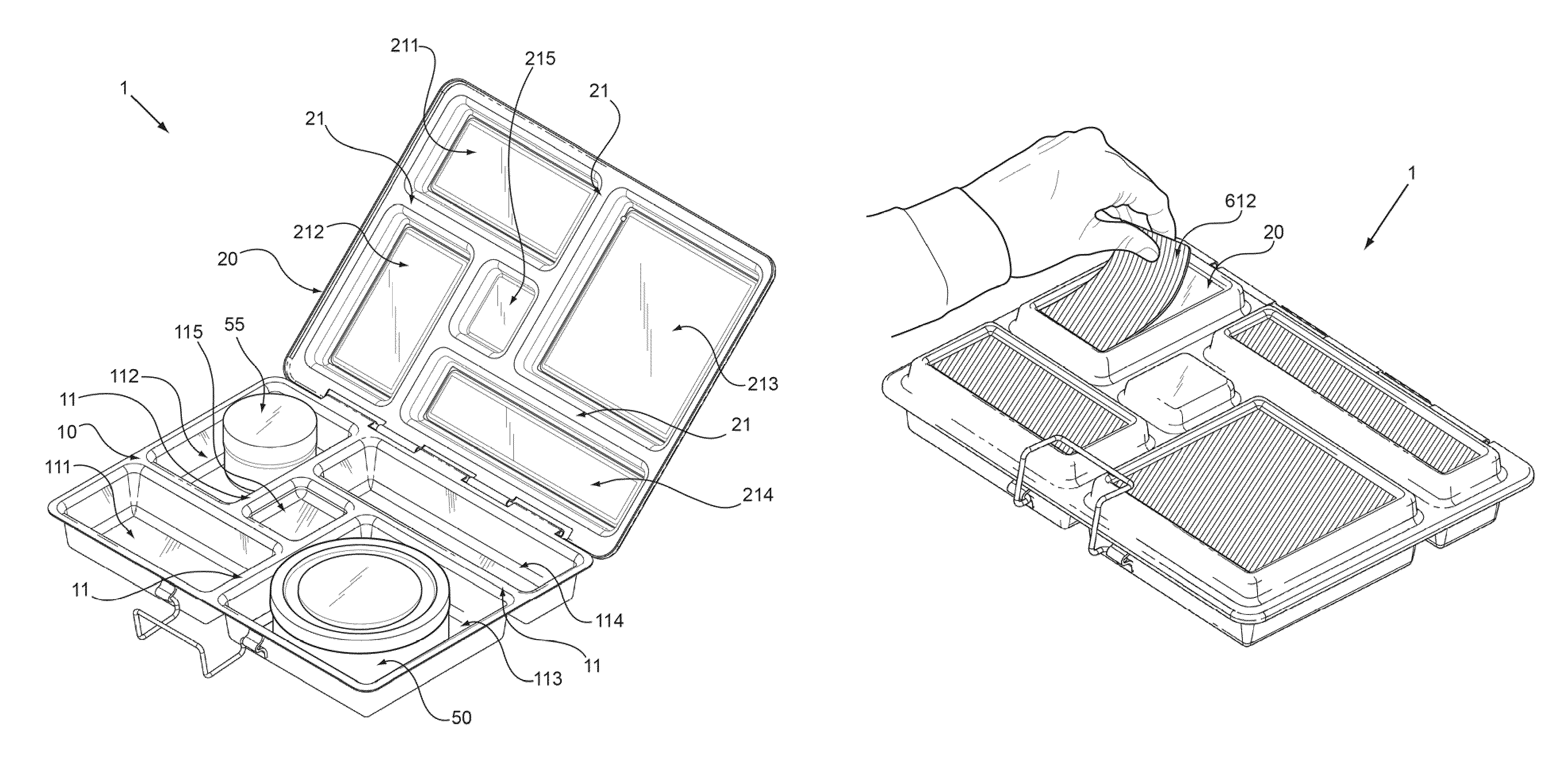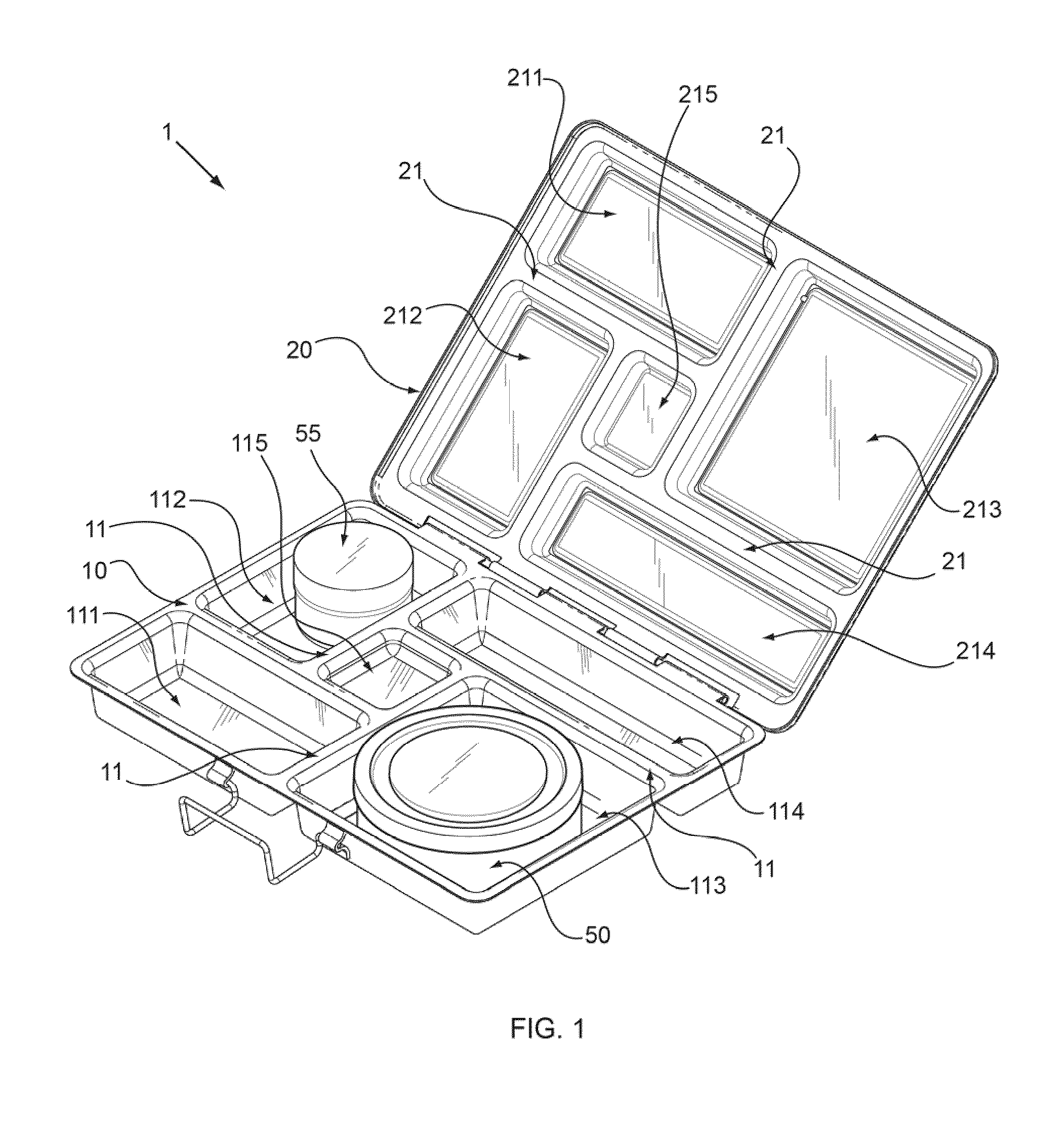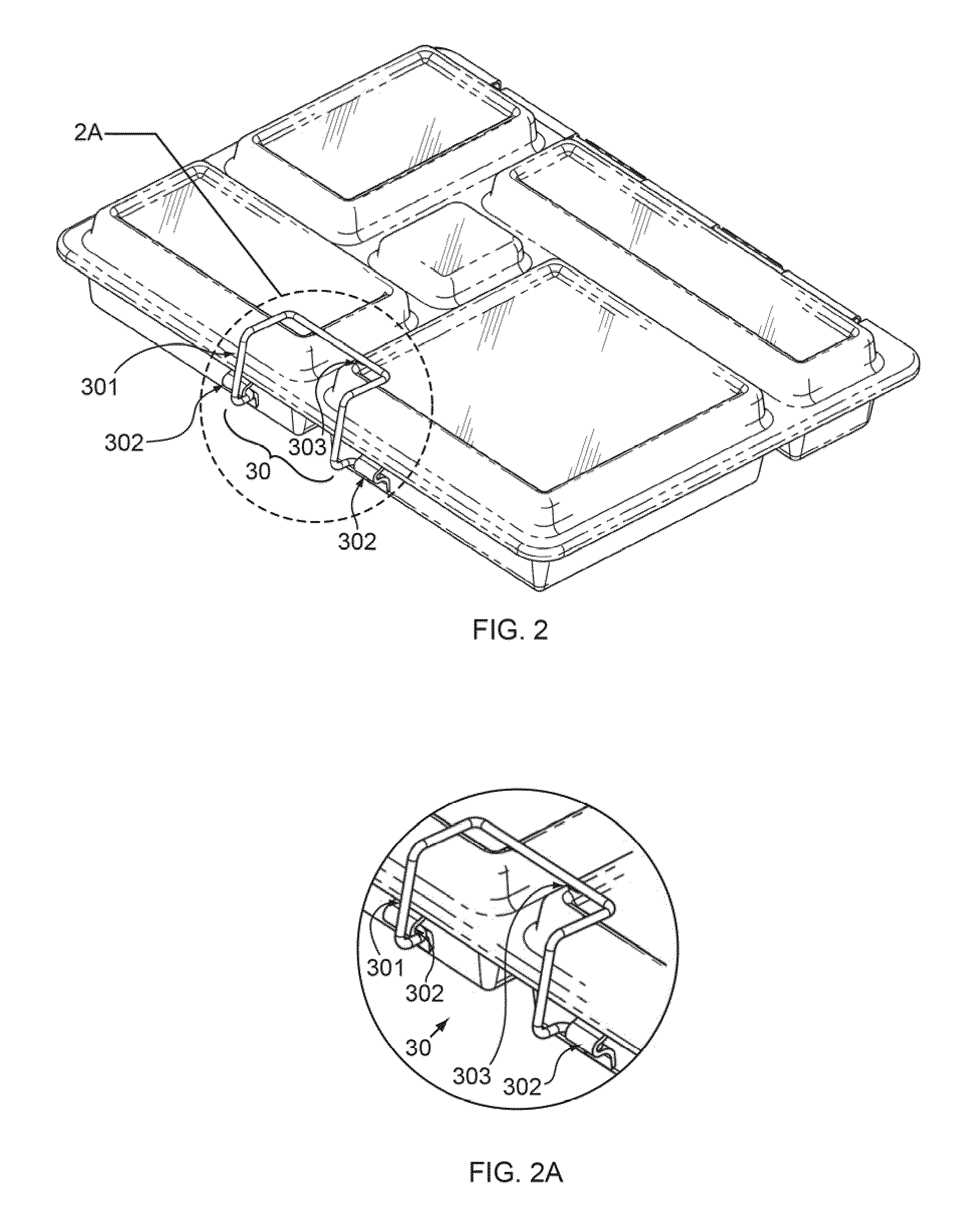Food container
a food container and lid technology, applied in the field of lunch boxes, can solve the problems of affecting the use of the container, presenting a less durable product, and often breaking, and achieving the effect of preventing or minimizing the shifting of the lidded container
- Summary
- Abstract
- Description
- Claims
- Application Information
AI Technical Summary
Benefits of technology
Problems solved by technology
Method used
Image
Examples
Embodiment Construction
[0029]FIG. 1 illustrates that the food container can be a lunch box 1 that can be in an opened configuration. FIGS. 2 and 3 illustrate that the lunch box 1 can be in a closed configuration. The lunch box 1 can have a first housing and a second housing. The first housing can be a door, lid or bottom tray 10. The second housing can be a door, tray or upper lid 20, for example, able to cover the bottom tray 10. The housings can be made from durable materials, for example, a metal such as steel, or a hard plastic. The lid and / or tray can be made from a ferromagnetic material, such as a steel and / or a hard plastic having a ferromagnetic powder embedded in the plastic.
[0030]The tray 10 can have dividing walls 11. The dividing walls 11 can divide the tray 10 into a plurality of compartments 111, 112, 113, 114, and 115. Each of the compartments 111, 112, 113, 114, 115 can have a depth for receiving food of various size and shape.
[0031]The lid 20 can be formed with upwardly extruded volumes ...
PUM
 Login to View More
Login to View More Abstract
Description
Claims
Application Information
 Login to View More
Login to View More - R&D
- Intellectual Property
- Life Sciences
- Materials
- Tech Scout
- Unparalleled Data Quality
- Higher Quality Content
- 60% Fewer Hallucinations
Browse by: Latest US Patents, China's latest patents, Technical Efficacy Thesaurus, Application Domain, Technology Topic, Popular Technical Reports.
© 2025 PatSnap. All rights reserved.Legal|Privacy policy|Modern Slavery Act Transparency Statement|Sitemap|About US| Contact US: help@patsnap.com



